Reducing employee attrition, improving retention, and digitally transforming operations to improve the efficiency of their volume hiring process are the top priorities in 2021 for contact center recruiters worldwide.
To meet such goals, the approach to high volume recruitment needs to shift from reactive and shaped by market changes to predictive and proactive.
Covid-19 accelerated the digital transformation of enterprises in the BPO and contact center industries. For the big players, a partial transformation proved to be insufficient; what started with allowing call center agents to work from home had to continue with digitizing the entire recruitment process.
This new reality is better for recruitment and especially for volume recruitment, as it makes processes more efficient, improves the candidate selection and onboarding experience, and contributes to lower attrition rates, as we’ve seen in our collaborations with clients like Arvato.
But before we move on and understand where we’re going in 2021, let’s see where we are coming from – how mass hiring looked before Covid-19.
What’s in?
Like what you see?
Don’t miss out. Subscribe to our quarterly digest to get the latest TA and TM resources delivered right to your inbox.
The old reality of high-volume recruitment in contact centers
In the old world of recruitment, manual and human-driven practices were the norm. Tasks like manually screening hundreds of candidate resumes, scheduling interviews one by one with the selected applicants and interviewing candidates by phone were all common practices.
Scaling and accelerating recruitment was only possible by scaling the recruiting team and hiring more people. Metrics like high attrition and low retention rate were considered inherent to call centers, and employee turnover was considered a hard to grasp matter.
In this old reality of high volume recruitment, time to hire was measured in weeks, not days or hours, and the candidates selected for call center roles often had no clue what the job actually entailed.
While the biggest players managed to adapt to the new reality and leave such practices behind, the reality is that a large number of contact centers are still promoting outdated processes.
If that’s your case as well, and you’re looking for ways to scale your recruitment efforts and increase your efficiency without having to expand your hiring team, keep reading!
We’ll explore the top three trends for contact center mass hiring in 2021 and the implications of these trends for the entire industry.
Top 3 trends shaping contact center volume hiring in 2021
We formulated the three biggest trends for 2021 based on what we see happening in the largest contact centers worldwide.
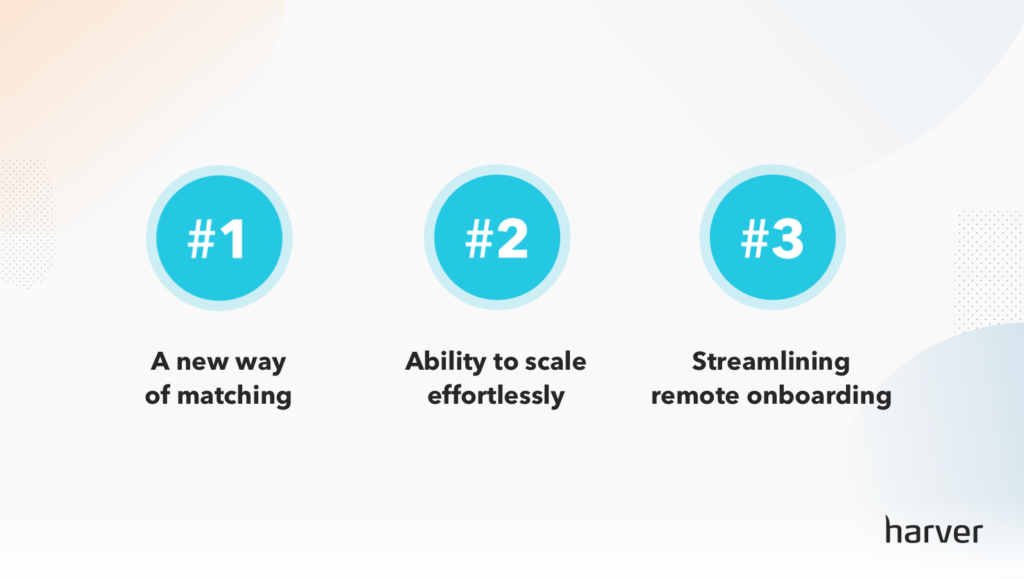
1. A new way of matching candidates to roles: Call-type matching
The first trend relates to the candidate assessment process and addresses a few main challenges. Predicting the future is harder than ever before, mainly due to:
- the fluctuating demand in the market,
- the job market volatility, and
- the need for internal mobility and workforce flexibility
The talent pools are changing and call center applicants are coming from many different industries. A lot of our clients are dealing with significantly larger applicant volumes, and there’s an increasing need for internal mobility, to be able to place employees in new roles, as demand changes.
These challenges are shaping trend number one: a new way of matching candidates to vacancies. The biggest players are moving away from job-specific matching and adopting the talent-specific matching approach.
Here’s how the traditional job-specific matching looks:

In the common vacancy-driven matching, selection procedures are built around specific job descriptions, and organizations hire applicants to fill in specific roles.
For BPO, this might mean taking in applications for a specific client program that has vacant seats to fill. For in-house teams, it might mean that they’re looking for technical support agents with specific skills, or for customer service agents.
Regardless of the position to fill, this approach is centered around the role and around a current need to fill a specific vacancy. So applicants are evaluated based on how well they match these specific jobs that they applied for, and not based on their skill set.
If we look at this from an assessment perspective, there’s nothing wrong with the approach, as long as you’re clearly defining the role and the knowledge and skills needed for performing in these roles.
However, in today’s reality, this process is inflexible and quite inefficient, especially when it comes to needing to accommodate a fluctuating talent pool across industries and markets. Another flaw of this approach is that it focuses on the applicant’s past experience, which is in our experience a weak predictor of future performance in this type of entry-level job.
Moreover, as a consequence of vacancy-driven matching, recruiters end up with very siloed pipelines, where applicants are provided with only one matching; if they’re not a good fit for the job, the candidate journey ends there.
So what we see now at a global level is the need to move away from vacancy-driven matching and adopt the new way of handling high volumes of applicants: call-type matching.
Hire better live chat agents, at scale.
Dive into the rise of live chat, the skills of top-performing agents, and how to best assess them to reduce attrition and guarantee top-notch customer service.

What is call-type matching?
Call-type matching is a new approach to volume hiring, which matches the best-suited applicants across multiple opportunities and roles.
The matching is still specific for BPO and contact center types of roles, but instead of locking applicants into specific jobs, you take a talent-driven approach. This helps you connect the right talent to the right role by evaluating key characteristics proven to drive success across different roles.
So in call-type matching, you have one talent pool and one assessment experience that helps you evaluate key competencies related to success across call types.
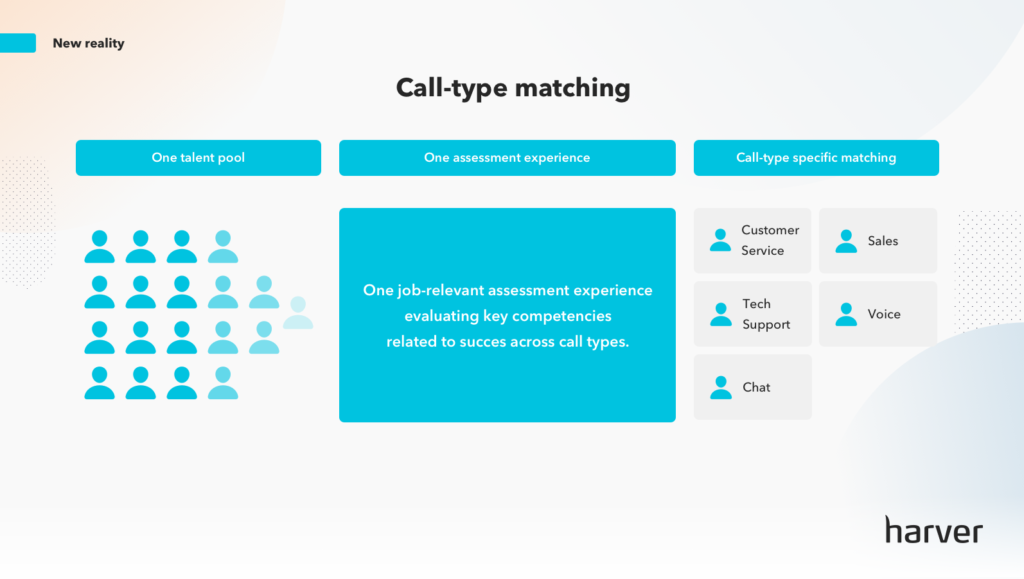
At the end of the assessment, you are provided with multiple match scores from different matching algorithms, and this process is unbiased and data-driven.
This increases the likelihood that you’re placing the right person into the right role and helps you avoid missing out on great talent that maybe was applying for a different vacancy but showed up to be a great fit for a technical support agent.
Here’s how this looks in practice.
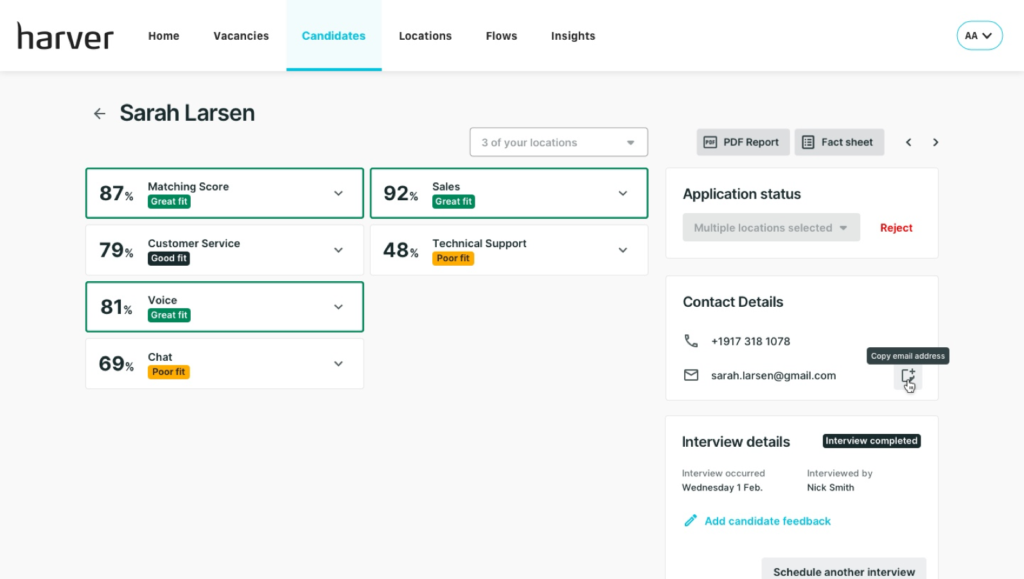
2. Ability to scale effortlessly
Our second trend comes from the renewed focus on efficiency and cost savings in the post-Covid-19 reality. At the beginning of the pandemic, all budgets had to be reviewed and defended again, and we believe that organizations will continue to focus on gaining efficiency, also in recruitment.
This efficiency has to come without a negative impact on the applicants, the candidate experience, or the quality of hire. But is that enough?
We believe that any gain in efficiency should contribute to the candidate experience and enable organizations to scale at will, without team changes. So trend number two for high volume recruitment in contact centers, in 2021, is the ability to scale effortlessly.
Let’s look back at the old reality of the recruitment process. A lot of the steps were manual, and the hiring process was a chain of decisions made by humans, followed by tasks done by humans.
The result was that if you had to scale your hiring capacity, you had to scale the recruitment team. Manual processes are costly, require time and resources, and don’t allow you to scale quickly.
So what do you do when you need to scale overnight and find 50 or 100 or 2000 new employees, to accommodate the new reality? Or what if you need to scale to a new continent and you don’t have recruiters who speak the language?
The solution is an end-to-end digital hiring process that starts with call-type matching and continues with fully automated steps that move the candidates throughout the entire recruitment funnel with minimum human intervention.
The selection of candidates and the matching to roles are automated, which ensures a faster time to hire and a higher accuracy than in human-driven recruitment. The progression to the next stages and the communication with the candidates is automated as well, allowing hiring managers to focus only on the candidates that match their selection criteria.
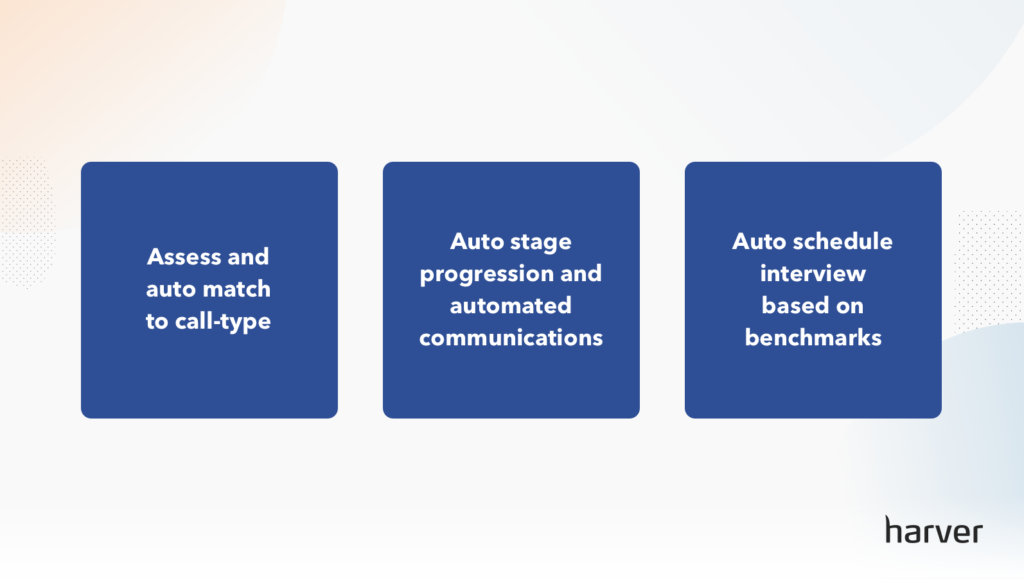
In this setup, candidates enter the process as soon as they hit the “Apply” button, automatically, and they get matched to the right call type by algorithms, based on a series of company-specific assessments.
The progression to the next stages – interview scheduling, phone call, etc. – is done automatically and instantly, so the candidate moves through the recruitment funnel in minutes, not days. Moreover, if the candidate is a great fit, you can immediately schedule an interview, so this part of the process is also automated, to make sure you don’t miss out on great talent.
What does this mean for your recruitment team and organization?
When we started exploring this trend, we mentioned the renewed focus on cost savings and efficiency. One of our clients, a large BPO, had to hire 6k new chat agents almost overnight to be able to handle the new Covid-19-related tasks.
They hired the 6k new people without adding a single new recruiter to the team; instead of working with 205 recruiters, they kept their team of 35 people but worked +585% more efficiently by automating the manual tasks.
Moreover, they were able to reduce the time to enrolment by 83%, from 21 to 3.5 days.
So if you’re dealing with similar challenges and thinking that your only option is to add more headcount to your hiring team, it’s time to consider the advantages of high-volume recruitment software for call centers!
- White paper
Before you continue!
Don’t forget to grab your free copy of our white paper on contact center volume hiring in 2021. Learn about:
-
The challenges currently shaping the contact e
center recruitment space - How employers can navigate the new remote-first reality, and the role of technology in a future-proof recruitment process
- The four building blocks of a fully digital recruitment process

3. Fully streamlining remote onboarding
Social distancing and working from home will continue in 2021 as well; we surveyed our BPO and contact center clients and only 13% are planning to return to the office.
What does this mean for the contact center agents? Their entire onboarding experience is changing. The first day “at the office” and the first weeks of learning and meeting new people are no longer how they used to be in the old reality.
Now, contact center agents have DIY home offices and they have to deal with all the system setups on their own. Asking for support can feel overwhelming and not being able to solve problems in a timely manner can quickly become frustrating.
It’s a bad first experience for candidates, but the impact doesn’t stop here. These tedious processes can lead to higher attrition rates, as employees realize that their work is different than they expected it to be.
How can you prevent this and create efficiency while making the first day at work a nice experience for new joiners? By offering your contact center employees an engaging, fully streamlined digital experience.
Instead of greeting your new employees at the office, you can send them a welcome package that includes, among others, their personalized onboarding QR code.
They scan it and they’re taken through an engaging mobile or web experience during which they get familiar with the team and role, they receive guidance for setting up their work computer, and they even go through an automated system check, to make sure that they’re ready to start.
All these without any human interaction, although your technical team receives in real-time the data collected during the system setup. This means that if something goes wrong, your technical team is informed in real-time and can intervene, reducing the frustration and making the process much more enjoyable.
Here are the results that one of our biggest clients in the BPO/contact center space achieved by implementing our volume hiring solution.
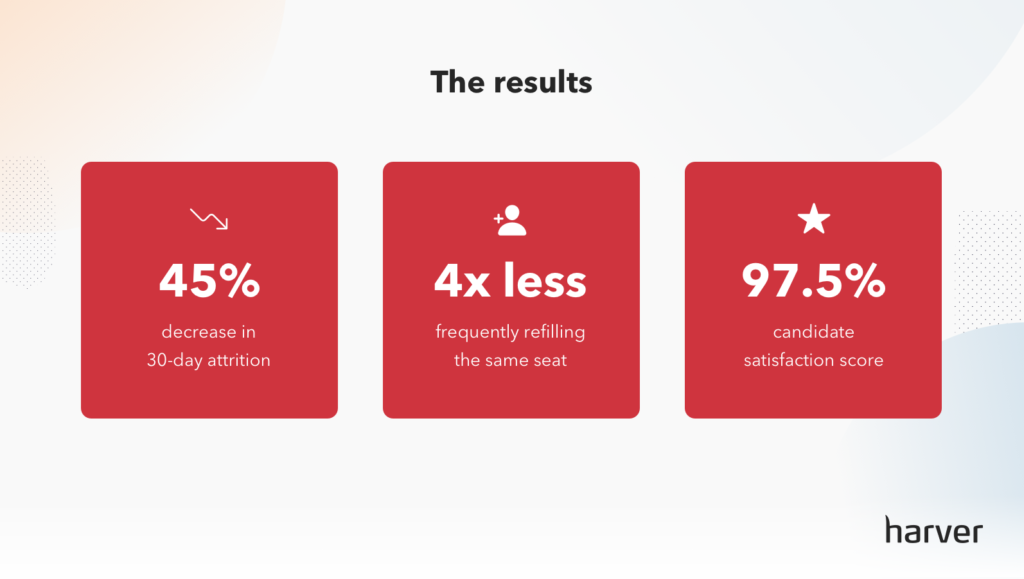
As you can see, it is possible to build a seamless, efficient, and candidate-friendly onboarding experience even if work from home is the new norm for your contact center agents.
Wrapping it up
The digital transformation of BPOs and contact centers will continue in 2021 and this will impact not only the call center agents, but also the recruitment teams, who will have to handle higher-than-ever volumes of applicants.
Headquarters will continue to push for more efficient processes and cost savings and this will force high volume recruitment teams to move away from their old practices and adopt fully digital recruiting solutions.
This will lead to three main contact center volume hiring trends in 2021: a new way of matching candidates to roles, the ability to scale effortlessly, and a fully streamlined remote onboarding experience for the contact center agents.
Our software enables end-to-end digital transformation, turning the hiring process into an experience that’s fast, friendly, and fair.
Experience our best-in-class Live Chat Assessment first-hand!
Perfect for remote hiring, our live chat assessment makes it easier than ever to hire live chat agents. Candidates experience the job, while you get actionable data to drive hiring decisions.

